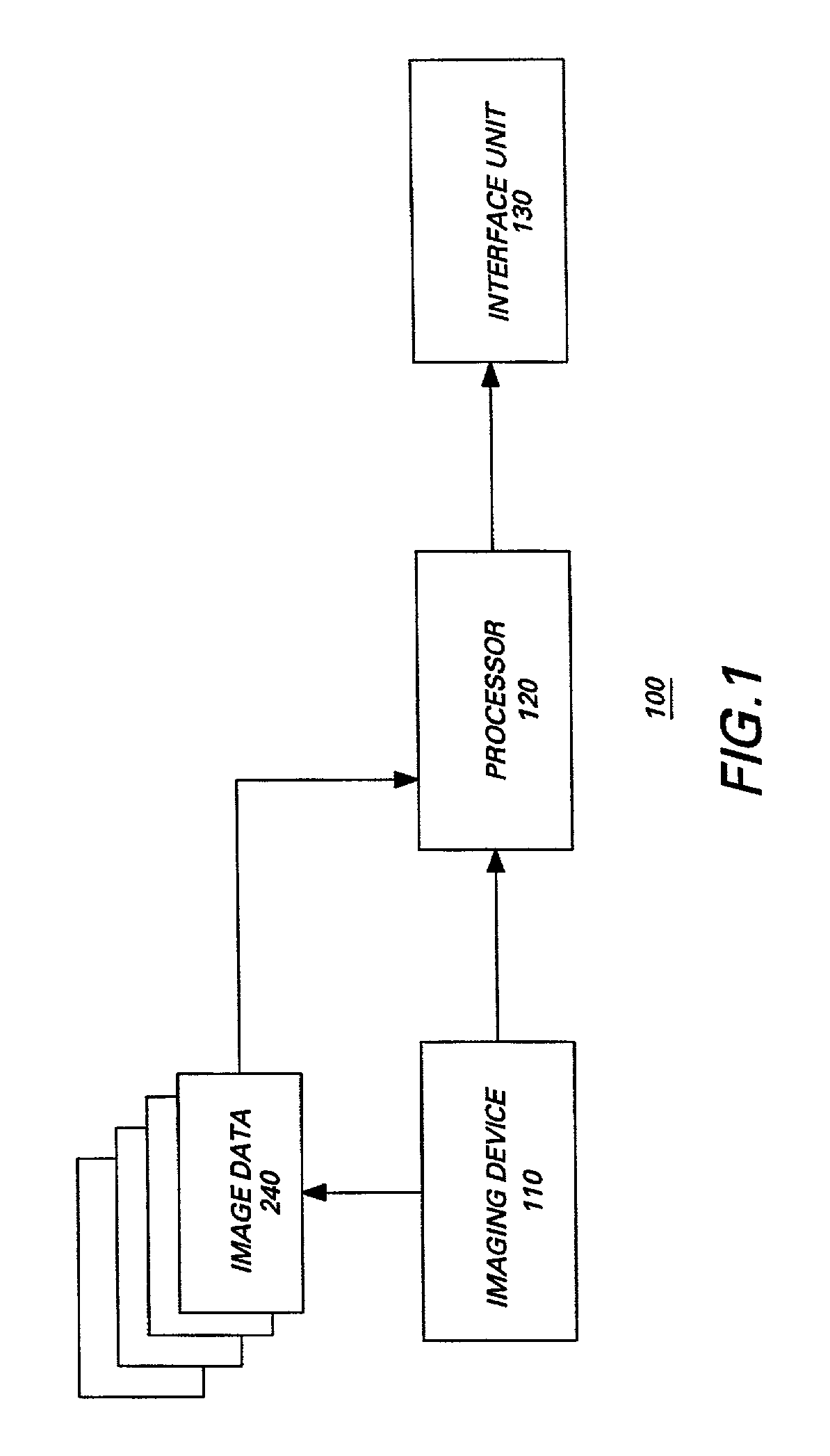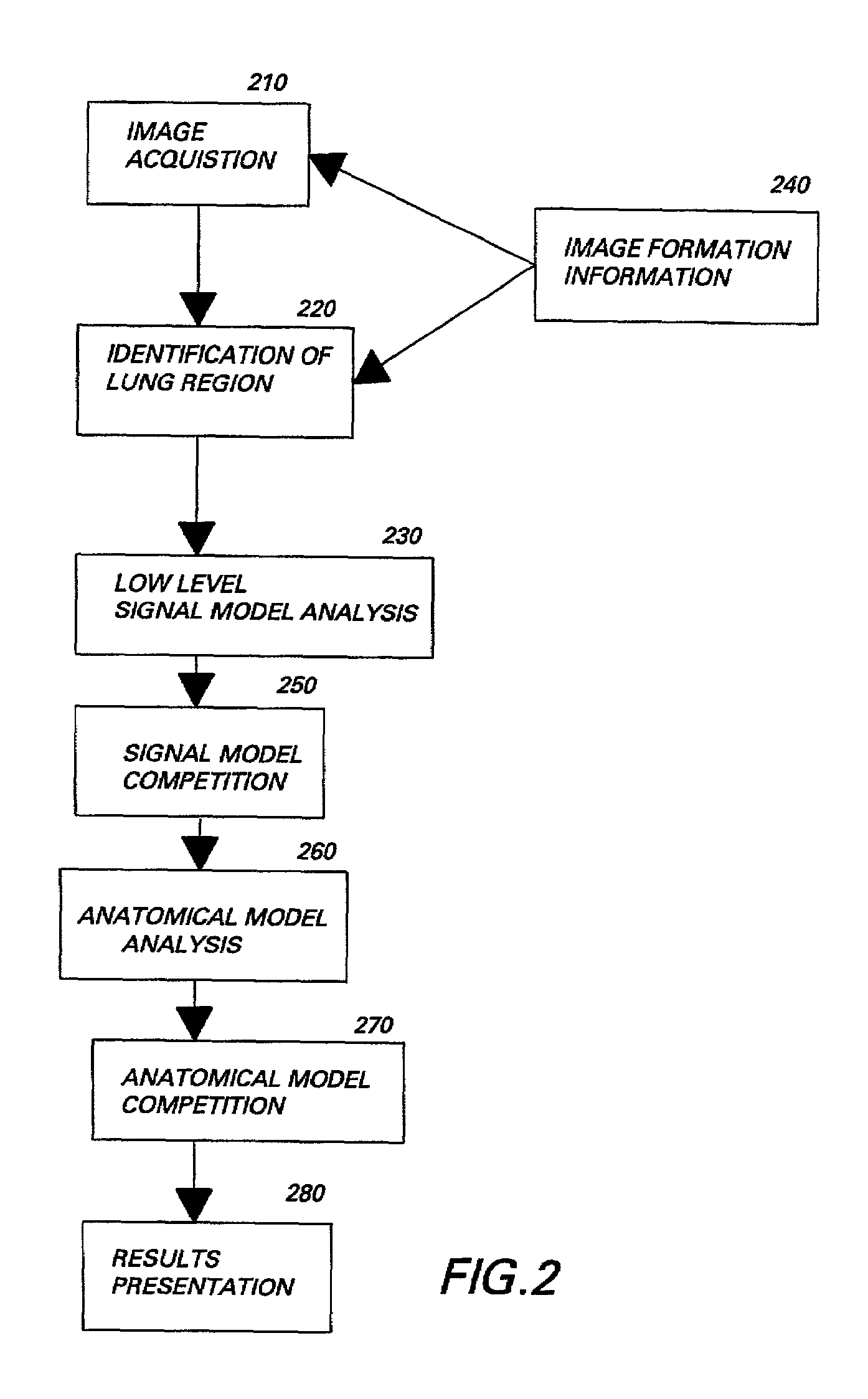Method and system for lung disease detection
a lung disease and image data technology, applied in the field of medical image data processing, can solve the problems of affecting the sensitivity and specificity of human reading, time-consuming and labor-intensive radiologists, and difficult for radiologists to classify the extent of disease progression
- Summary
- Abstract
- Description
- Claims
- Application Information
AI Technical Summary
Benefits of technology
Problems solved by technology
Method used
Image
Examples
Embodiment Construction
[0016]Referring to FIG. 1, a general block diagram of a system 100 for disease detection is shown. System 100 includes an imaging device 110, which can be selected from a number of medical imaging devices known in the art for generating a plurality of images. Most commonly, computed tomography (CT) and magnetic resonance imaging (MRI) systems are used to generate a plurality of medical images.
[0017]During a CT imaging session, a patient lies horizontal and is exposed to a plurality of x-rays measured with a series of X-ray detectors. A beam of x-rays passes through a particular thin cross-section or “slice” of the patient. The detectors measure the amount of transmitted radiation. This information is used to compute the x-ray attention coefficient for sample points in the body. A gray scale image is then constructed based upon the calculated x-ray attenuation coefficients. The shades of gray in the image contrast the amount of x-ray absorption of every point within the slice. The sl...
PUM
 Login to View More
Login to View More Abstract
Description
Claims
Application Information
 Login to View More
Login to View More - R&D
- Intellectual Property
- Life Sciences
- Materials
- Tech Scout
- Unparalleled Data Quality
- Higher Quality Content
- 60% Fewer Hallucinations
Browse by: Latest US Patents, China's latest patents, Technical Efficacy Thesaurus, Application Domain, Technology Topic, Popular Technical Reports.
© 2025 PatSnap. All rights reserved.Legal|Privacy policy|Modern Slavery Act Transparency Statement|Sitemap|About US| Contact US: help@patsnap.com



